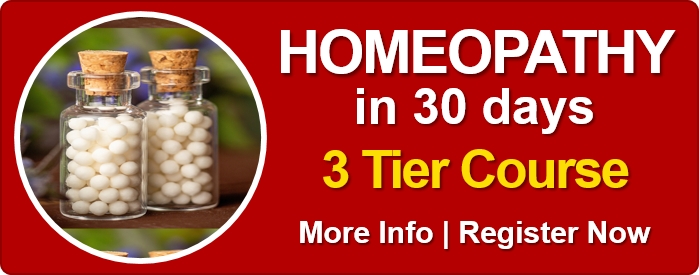Know Your Remedies: Camphora Officinale (Camph.)

Remedy Source
Camphora Officinale (Camph.) is a homeopathic remedy prepared from the gum of the Laurus camphora (Cinnamomum camphora) tree.
What Is Camphora Officinale (Camph.) Used For?
Camphora is an important remedy for sensations of coldness – in general or in spots – and types of collapse as may occur in sunstroke, fainting, dysentery or cholera for which it is still used with success in some countries today. The person needing Camphora will shiver with coldness but not want to be covered or warmed. They may also complain of painful coldness or localised cold spots. Should collapse occur, the pulse will be weak and barely perceptible, and they will feel cold. Types of cramps and convulsions also fall within the Camphora picture. Solid camphor, often sold in small blocks or balls, also has many uses. It is a well-known moth and cockroach deterrent and is regularly used in balms and liniments to relieve pain or itchy skin. It is also considered an ‘antidote’ of many homeopathic remedies, especially plant-based ones, and for this reason, solid camphor should not be used with them.
Camphora Officinale (Camph.) Symptoms
Mental-Emotional
- Easily offended.
- Anxiety at night, especially when alone.
Chest
- Suffocative attacks – asthma or bronchitis.
- Pneumonia or bronchitis with collapse.
Gastrointestinal
- Cholera and dysentery-like symptoms.
Skin
- Rashes from exposure to sunlight.
- Localised cold spots.
- Coldness with blue discolouration.
- Raynaud syndrome.
Musculoskeletal
- Cramps.
- Weakness.
Where Do I Find Camphora?
Camphora Officinalis (Camph.) is available from our online store as a single remedy in either pills or liquid, and as part of the following Complexes (combination remedies): Mastitis; Tonsillitis.
Home Treatment Guidelines
Acute, Self-Limiting Conditions
Conditions like colds or minor injuries, which are short-term and typically improve on their own, can be managed at home with homeopathy. However, in emergencies or if symptoms worsen, contact your healthcare provider.
Chronic Conditions
These home treatment instructions do not apply for ongoing issues, whether mentioned above or not, like persistent allergies or chronic pain. You should consult a qualified homeopath for a personalized treatment plan to achieve the best results with homeopathy for chronic conditions.
How to Take the Remedy for Acute Conditions
- Take one pill or five drops of the remedy. The frequency depends on symptom severity. As examples:
- For life-threatening symptoms, take every 1 minute and seek emergency help immediately.
- For mild symptoms, take every 4 hours.
- Stop taking the remedy once you feel better. Resume if symptoms return.
- If no improvement after four doses, choose a different remedy or consult a professional homeopath.
- For more details on dosing, refer to: How Often to Dose with a 30C Homeopathic remedy.
- For information on the different potencies, read: Guidelines on which potency to use
Additional Information From Past Masters
Homeopathy is a 200-year-old system of medicine. Early homeopaths recorded detailed notes on how remedies worked, including initial tests, remedy relationships, and their experiences. These writings were shared to improve homeopathic practice and now offer fascinating insights into past uses of homeopathy. Here’s an example, edited and modernised for clarity, from Leaders In Homoeopathic Therapeutics (1898) by E. B. NASH M.D.:
Camphora Officinale (Camph.) – Keynotes
- The body feels very cold on the outside, with sudden, complete weakness; collapse.
- The patient doesn’t want to be covered, even though they look cold, and may throw off blankets.
- Pains go away when thinking about them; very sensitive to cold air.
Camphora Officinale (Camph.) – General Notes
The main feature of Camphor is: “Great coldness of the external surface, with sudden and complete prostration of the vital forces.” No surprise Samuel Hahnemann, a founder of homeopathy, listed Camphor first in his trio of cholera remedies (Camphor, Cuprum, and Hellebore). If we had to describe this in one word, it’s collapse. No remedy is closer to Camphor than Veratrum album, but Veratrum isn’t in Hahnemann’s trio. Camphor shows collapse with painless stool or no stool at all, while Veratrum’s collapse follows heavy vomiting and diarrhea. Both have cold skin, but Veratrum also has cold sweat, especially on the forehead, with a face that looks like someone very ill (called hippocratic face). When stomach and limb cramps are the main issue, Cuprum leads as the top remedy in the trio. These remedies work for these symptoms not just in cholera, but in any disease. A unique thing about Camphor’s coldness: the patient refuses to be covered, no matter how cold they seem. Secale, another remedy, has similar coldness or collapse and works well for gangrene in older people (gangrena senilis) under the same signs. Dr. Rubini from Naples treated 592 cholera cases with Camphor, proving Hahnemann right. Collapse with cold skin and hating heat can happen when a skin rash goes away or is suppressed, in late stages of baby cholera (cholera infantum), pneumonia, or small airway bronchitis, from extreme cold or shock. In fact, for collapse symptoms, think of Camphor first, unless the patient has died. The dose depends on the patient’s sensitivity or strength, from the basic liquid form (mother tincture) to the strongest dilution (highest potency).







